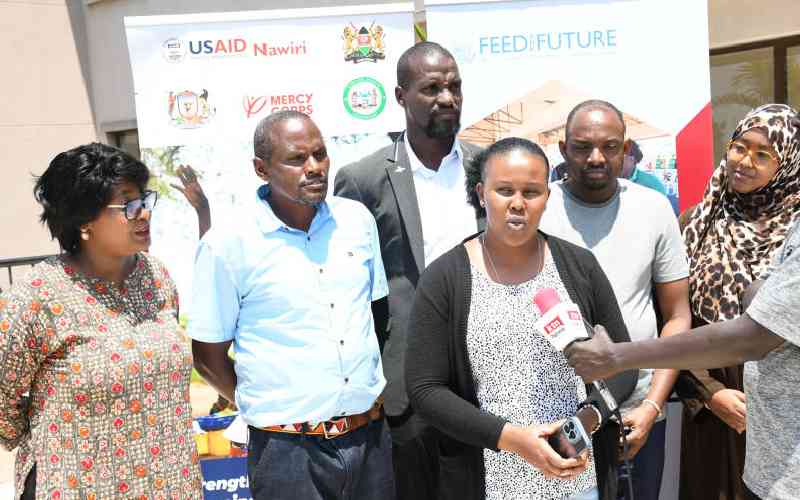Policy tackles Samburu's conflict, hunger crisis
Rift Valley
By
Joseph Kipsang
| Aug 16, 2024

Samburu County’s arid landscapes have long been plagued by banditry and fierce battles over scarce resources and cattle rustling between neighbouring communities.
This relentless conflict has displaced families and worsened nutritional deficiencies, leaving thousands struggling to survive. Conflict-induced malnutrition remains a severe issue in Samburu, ="https://www.standardmedia.co.ke/article/2000098112/trail-of-blood-and-death-in-samburu-since-suguta-massacre">which is among Kenya’s counties< with the highest rates of child malnutrition.
According to the Kenya Demographic and Health Survey (KDHS) 2022, while national stunting rates notably declined from 35 per cent in 2008-09 to 18 per cent in 2022, Samburu’s situation remains critical, with a stunting rate of 31 per cent.
The Integrated Smart Survey Report for Samburu County, released in June 2023, reveals a dire child nutrition crisis.
The global acute malnutrition rate stands at 20.3 per cent, indicating a severe issue. The underweight rate worsened to 39.2 per cent from 35.7 per cent the previous year. Additionally, Severe acute malnutrition is at 1.9 per cent, and stunting affects 37.2 per cent of children, underscoring the gravity of the situation.
READ MORE
KEJA face JKT test in Dar as KAS seek to bounce back
American charged over Sh164m fake gold scam
Lornah Faith: This is what the Fifa award really means to me
Junior Starlets make history as first Kenyan side to win a FIFA World Cup match
Junior Starlets take positives from World Cup
Kenya's Junior Starlets eliminated from U-17 Women's World Cup
Crunch moment for Junior Starlets as they lie in wait for North Korea
Junior Starlets keep heads high despite losing on U17 World Cup debut
Rising Starlets suffer defeat to England in FIFA U-17 Women's World Cup
Junior Starlets ready to make history at 2024 U-17 Women's World Cup
“We have faced numerous security challenges. There is an urgent need for concerted efforts to restore peace within our county and neighbouring regions. Insecurity has hindered our progress, causing us to invest heavily in development only to see those efforts undone,” said Wilson Lesuuda, the Samburu County Secretary.
In response to these challenges, the United States Agency for International Development (USAID) Nawiri Project, in collaboration with the Samburu County Government, is developing a peacebuilding policy aimed at addressing the root causes of conflict and improving nutrition outcomes.
A two-day workshop in Nakuru County brought together stakeholders from USAID Nawiri, USAID Kuza, Samburu County officials among other stakeholders to validate and refine the draft Peacebuilding Policy and Bill.
This initiative is a crucial step in ="https://www.standardmedia.co.ke/rift-valley/article/2001312249/food-crisis-looms-large-as-dry-spell-sweeps-across-counties">enhancing peacebuilding< efforts to sustainably reduce acute malnutrition. Participants reviewed the draft policy thoroughly and committed to further refining it to effectively address local conflicts.
“We are here today to review and contextualize the peace and cohesion policy for the Frontier Counties Development Council (FCDC) region, focusing on conflict management, resource mobilization, and establishing a legal framework.” “As an FCDC member county, promoting peace and cohesion is one of our core mandates. Our goal is not just to legislate but to direct resources and efforts toward implementing this policy for lasting peace,” said County Attorney Peinan Loronyokwe.
Lesuuda highlighted the significant challenges faced due to the absence of a peace policy but expressed optimism about overcoming these issues.
Anzal Rashid, a policy advisor at USAID Kuza, noted that conflict and insecurity in Samburu County and Northern Kenya, deter investors despite the region’s opportunities.

